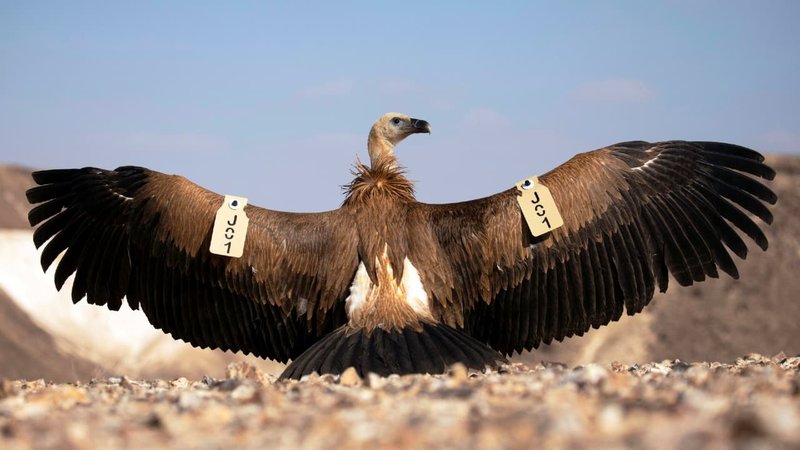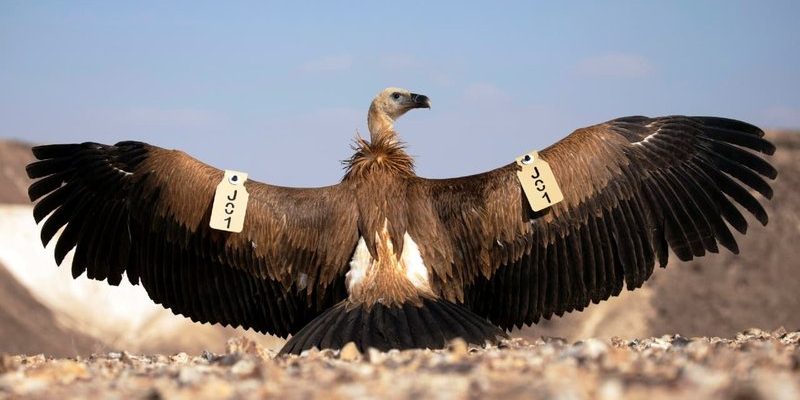
These birds are like nature’s cleanup crew, feasting on dead animals and helping to keep the environment healthy. However, just like any good team, they are feeling the pressure from various threats. From habitat loss to poisoning, their numbers have been declining in many regions. So, what does this mean for the future of the Griffon vulture? Let’s break it down and take a closer look at their current status.
Understanding the Griffon Vulture
The Griffon vulture (Gyps fulvus) is a large bird found in Europe, Asia, and parts of North Africa. With a wingspan that can stretch up to 2.8 meters (almost 9 feet), they are truly a sight to behold. These birds are primarily scavengers, which means they rely on finding dead animals to eat. You can often see them circling high in the sky, scanning the landscape for their next meal.
What makes them unique is their social behavior. They often feed in groups, which helps them take down larger carcasses. Imagine a big family gathering around a feast—that’s how these birds roll! They have a keen sense of smell and can locate food from astonishing distances, making them crucial for nutrient recycling in their habitats.
Despite their impressive adaptation skills, the Griffon vulture’s reliance on large landscapes makes them vulnerable. They need vast open areas to find enough food and suitable nesting sites. This dependence on their environment is one reason why their population is shrinking in various parts of the world.
Current Population Status
So, is the Griffon vulture threatened? The short answer is yes—many populations are indeed declining, and they are classified as near threatened by the International Union for Conservation of Nature (IUCN). This classification suggests that, while they are not yet endangered, they are at risk of becoming critically endangered if current trends continue.
In countries like Spain and France, where these birds were once common, populations have dramatically decreased. Some areas have seen a staggering drop of over 50% in just a few decades. This decline is mostly due to factors like habitat loss, food scarcity, and direct human impacts like poisoning.
Here’s a quick breakdown of factors affecting their numbers:
- Habitat Loss: Urban development and agriculture are encroaching on their natural habitats.
- Poisoning: In some regions, livestock carcasses are poisoned to control predators, accidentally harming vultures.
- Food Scarcity: Changes in farming practices have led to fewer available carcasses for scavengers.
Threats to the Griffon Vulture
Understanding the threats to Griffon vultures gives us insight into why their numbers are dwindling. One of the main issues is poisoning. Farmers sometimes use poisons to eliminate predators like wolves or foxes. Unfortunately, these poisons don’t discriminate; vultures that scavenge on the carcasses end up being affected too.
Another significant threat is habitat loss. As we expand cities or develop agricultural lands, we take away the natural spaces these birds call home. It’s like pushing them out of their neighborhood and telling them to find food elsewhere. This not only affects their nesting sites but also their access to food.
Lastly, climate change is starting to play a role in their future. Shifts in weather patterns can alter food availability, making it even harder for these birds to survive. Imagine searching for food, only to find your usual spots have dried up or changed.
Conservation Efforts
So, what can we do to help the Griffon vulture? Plenty! Conservationists are working tirelessly to protect these majestic birds. One major strategy is habitat restoration. By preserving and restoring natural habitats, we can provide vultures with the space they need to thrive.
Another vital effort involves raising public awareness. Many people don’t realize how important vultures are for our ecosystems. Educational programs aim to inform communities about the benefits of these scavengers, helping shift perceptions and reduce negative attitudes.
Additionally, some regions are implementing regulations around the use of poison and creating safe zones for vultures to feed. These measures are crucial for improving their survival rates. Here’s the thing: when we protect vultures, we’re also safeguarding the overall health of our environment.
How You Can Help
Feeling inspired to make a difference for the Griffon vulture? There are several ways you can contribute!
- Educate Yourself and Others: Start with reading up on vultures and sharing that knowledge. The more people understand these birds, the more support there will be for conservation.
- Support Conservation Organizations: Consider donating to or volunteering with groups that focus on wildlife conservation, particularly those dedicated to vultures.
- Advocate for Policy Changes: Engage in discussions about wildlife protection policies in your community. Every little effort counts!
By taking these steps, you can join the fight to protect the Griffon vulture and other important species.
The Griffon vulture is more than just a bird soaring in the sky; it’s a crucial part of our ecosystem. Understanding whether they are threatened or endangered helps us appreciate the challenges they face and the vital role they play. Their decline is a call to action for all of us. By supporting conservation efforts and spreading awareness, we can work together to ensure that future generations will still see these magnificent birds in the skies.
In the end, it’s all about balance. Nature has its way of managing ecosystems, and the Griffon vulture is a key player. Let’s make sure we keep our skies filled with their majestic presence for years to come!

